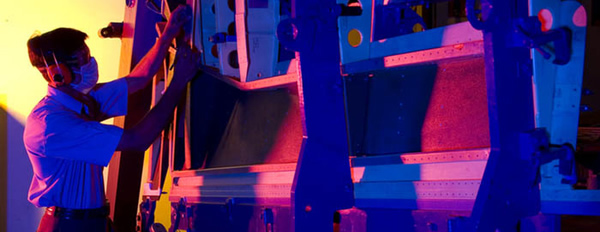Every industry is bound to go through phases, or as the world calls it—change. In the past few years, the aerospace and defence (A&D) sector has found itself in a tough position, facing a changing, somewhat unpredictable political climate. Some companies have even moved away from being traditional vendors in the defence industry to being vendors in others.
However, according to Deloitte, the future of aerospace industry seems to be on the rise, as there has been an increased demand for all models and types of aircraft in the recent past. According to the report, there is an expected average annual growth of 4.4% and 4.6% over the next two decades. That is in terms of freight traffic and commercial passengers respectively. Let us have a look at some of the current modern trends that are on the rise in the aerospace-manufacturing industry.
Innovative modes of air travel
A part of the quest for human kind was to fly and it was answered when the first working airplane was made. But people have now started taking personal air travel seriously. Various jet-pack ideas have been doing the rounds, and there have been attempts made at seeing the dream of flying cars come true. While looking up into the sky will tell you it is not yet crowded with office commuters, this could become a possibility sometime in the near future. The practice of air traffic control will need to come up with new measures and guidelines.
Managing data
Data is very important. Every industry faces the same problem—how to best handle the data that is at hand. The fact that there is so much data to handle from all the vehicles, and then integrate it with data collected from other vehicles and satellites, makes the process even more complex. It is just the reason why surveillance vehicles get a lot of attention from techie, military and political bodies. No wonder why governments are coming up with generous budgets for handling big data in this realm.
Signals in the air
The general communications method which is used to convey through the cockpit to the air traffic control is different from the one used between different aircraft. The US Air Force has revealed videos of how mini drones can work based on data-driven interactivity to achieve specific targets in a coordinated fashion. Such technology is expected to find its way into the systems of commercial planes, and hopefully jet packs, soon.
Development of system software
Unlike most other types of programming, the software of an aircraft is system independent and it is up to the developer to know every detail in order to ensure the system works as desired, in the short and long run. For example, software can be used to make landings faster and smoother, and do away with the staggered approach used these days. The technology will also save fuel. When applied to a large-scale scenario, the savings of a single day, worldwide, will be significant enough to power a small region for a day!
While it is all great to come up with the latest developments in terms of aerospace components manufacturers, the ecosystem will need highly skilled and well-trained personnel. The fact that many students have started gaining interest in aerospace is probably the biggest positive for players looking at the horizon. Some youngsters are focusing their interest in programming on aircraft systems to diversify into aerospace, because they feel software will play a crucial role once it is integrated with the aerospace hardware itself.

Be the first to comment on "5 Modern Aerospace Technology Trends"